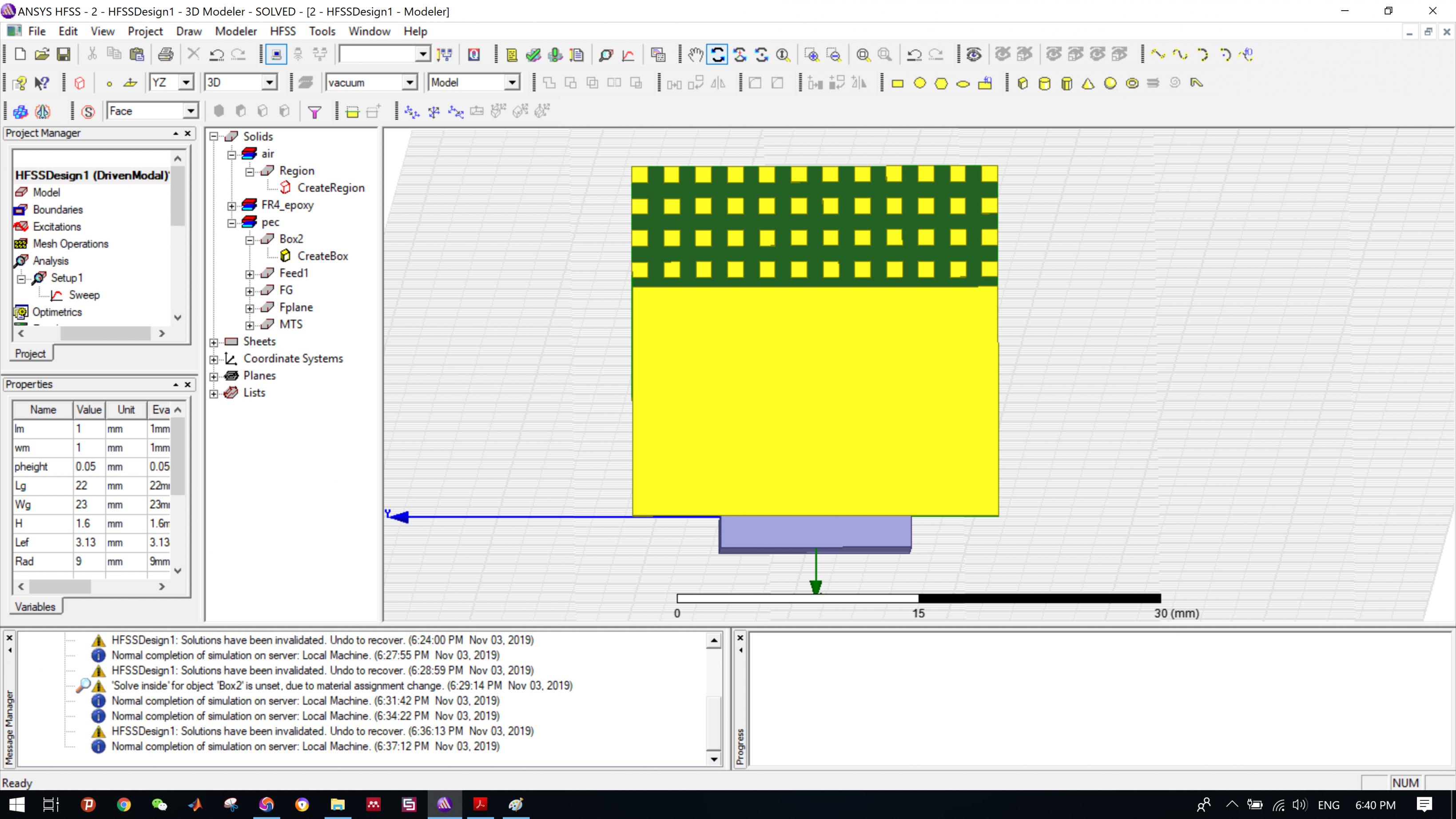Grounded co planar microstrip antenna excitation in HFSS
I'm modeling a grounded co planar microstrip antenna in HFSS and having some problems with the excitation. The excitation dimensions are below. The antenna should oscillate at three frequencies. Its been almost 2 weeks since i started this work and still nothing works. someone plz help with this.



Welcome BilalMir,
You're using a waveport, but only exciting one mode. Have you checked which mode this is? Typically for a CBCPW it's a parallel-plate type mode.
I would suggest exciting 3 modes; the CPW one is usually the third.
Thanks for the reply. Sorry, i'm new and i'll need some more details. The required S11 is below. Even if i excite 3 modes using wave port, i won't get the output in single graph.
- Edit the waveport to excite three modes.
- Plot the S11 and S21 of each mode.
Ok, Let me try.
Thanks
You might also find it helpful to look at the field structure of the various modes at the port to more clearly understand the excitation. CPW and GCPW propagation often is in an unexpected mode. Pay close attention to the side gap width and the dielectric thickness. You might also need to consider vias in the model. Getting the simulation in line with the actual physical situation is much more complicated with this type fo feed line when contrasted to a microstrip line. In a GCPW the strongest fields can be between the center and ground line a micro strip or they can be between the side grounds and center. The situation changes with the dimensions as I mentioned earlier. It is not trivial to get it right.
Regards,
Azulykit
I never simulated GCPW in hfss but I know that "multipin waveguide port" in CST can make this easier, if you have the choice.
There are references to similar posts at the bottom of this thread. Successfully modeling a GCPW line is a long standing challenge. This reference is to a similar thread:
https://www.edaboard.com/showthread....nded-co-planar ( Microstrip vs Grounded co-polar (6) )
This question is regularly addressed on this site.
Regards,
Azulykit
